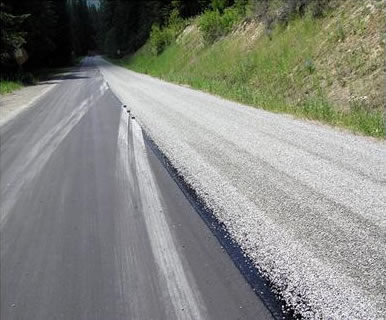Do Safer Roads and Cars Make For Safer Driving?
A new study displaying that bad roads contribute for additional than half of the targeted traffic fatalities in the US has stirred a lot of debate. From 1979 to the present, most studies have shown that driver error is most responsible for website traffic collisions. Are terrible roads at fault and will enhancing the roads decrease the fatality rate? There is some data to show that the conventional approaches of road improvement may well actually make the roads a lot more dangerous.
A lot of the nation’s highways are in undesirable shape, which includes bridges and overpasses. There is no doubt that we need additional and far better roads to relieve the targeted traffic burden specially in significant cities. However widening roads, adding additional indicators and clearer lane markers could not be the greatest answer. There have been some arguments claiming that widening roads and painting clearer markings will lead to the “Peltzman Impact”.
Sam Peltzman, a professor of Economics at the University of Chicago theorized that people today have a tendency to respond to safety regulations or security technologies by engaging in a lot more hazardous behavior. He felt that folks adjust their behavior to a regulation in ways that counteract the intended effect of the regulation. A single study that identified the Peltzman Effect to be true looked at enhanced safety technology in NASCAR race automobiles. The study revealed that safety improvements in race cars have resulted in riskier driving behavior and an increase in the number of collisions on the raceway.
The Insurance coverage Institute for Highway Safety (IIHS), in searching at new technologies to make cars safer, warned that systems made to hold a car from automatically straying from the lane or from coming too close to a automobile ahead are fantastic in theory but they really feel it will give drivers a false sense of safety major them to take their eyes off the road much more often or enabling them to become far more distracted.
The intended effect of creating wider, clearer roads is to enhance the flow of website traffic and to reduce down on injuries and deaths due to collisions. The Peltzman Effect nonetheless says that, as roads are enhanced, drivers really feel they can take greater risks and the average speed on the roadway increases. As a result, the intended effect of creating the road safer is offset by riskier driving behavior and the price of collisions is generally unchanged.
As a reaction to this, site visitors engineers in cities about the planet have moved to a European innovation identified as “Visitors Calming”. To slow or calm targeted traffic, visitors calming devices include speed bumps, roadway restrictions, and indicators painted on the road surface. In all probability the greatest and most visible examples of traffic calming procedures are the visitors circles that are replacing regular 4-way intersections. Site visitors circles enable website traffic to move by means of an intersection without having the use of traffic lights. Website traffic circles force drivers to slow down upon getting into but retain traffic moving additional smoothly due to the lack of website traffic lights.
Visitors calming measures have been implemented from Florida to Washington State but city planners are acquiring that they are really high-priced to set up and sustain. Site visitors calming is most generally seen on urban streets with decrease speeds. Research have located that implementing site visitors calming measures on significant highways have had small effect on speed manage.
Hans Monderman, a Dutch website traffic engineer looked at some of the traffic calming procedures and felt they were ineffective. Monderman rejected the notion that wider roads and more warning signs designed a safer atmosphere. He was hired to appear at a street in the Dutch village of Oudehaske, exactly where speeding drivers had struck and killed two children. As an alternative of employing the typical website traffic calming devices, Monderman removed the curbs, took out the signs, and applied paving bricks that had the effect of making the road seem narrower. The effect was to produce sufficient uncertainty in the minds of drivers that website traffic promptly slowed down and the typical speed was substantially reduced. With no indicators or lane markings, the impact changed driving behavior generating drivers a lot more accommodating and cooperative.
On yet another project, he removed the traffic signals and signs and replaced a regular 4-way intersection with what he called a “traffic square”. https://roadsahead.co.uk resulting raise in cooperation amongst motorists, cyclists, and pedestrians led to a dramatic lower in the collision price. He often demonstrated the effectiveness of this new intersection by safely walking backwards down the street with his eyes closed.
